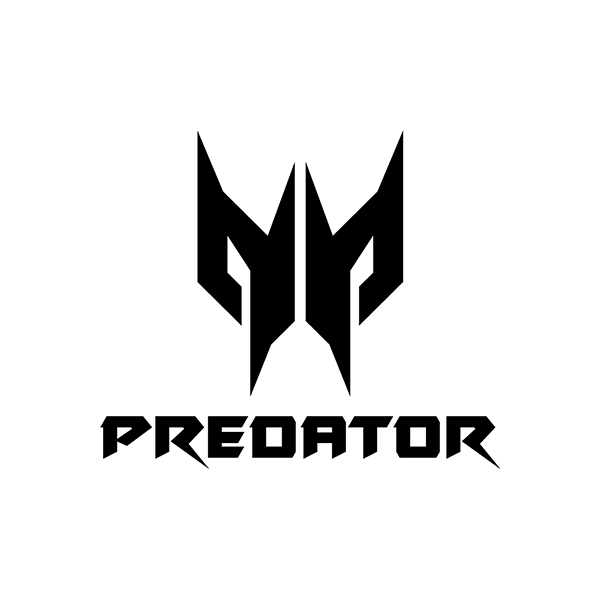All Endings in Silksong Explained and How to Get Them (Spoilers)
This guide explains every ending in Silksong and how to unlock each one, then breaks down what those finales mean in the story. You will find clear, step-by-step paths to trigger the endings in Act 2 and Act 3, starting with Grandmother Silk at the Citadel and branching into the Silk and Soul questline. Along the way we unpack the lore behind Hornet’s choices, the Weaver lineage, the Snail Shamans and the void, and why outcomes like Weaver Queen, Twisted Child, Snared Silk, Sister of the Void, Passing of the Age, and the reported secret ending matter for Pharloom. Major spoilers ahead.
Lore primer: how Hornet arrives in Pharloom
Hornet is taken to Pharloom, a kingdom woven together and controlled by living silk. Threads coil through citizens, machines, and even corpses, pushing them toward madness and making them attack intruders. At the center of this web lies Grandmother Silk, a higher being who slumbers inside a cocoon at the top of the Citadel. Her influence reaches across the land, and many in Pharloom treat her as a monarch or deity.
Hornet can escape the dungeons but cannot simply leave the kingdom. The silk threads will drag her back unless she confronts their source. That sets her climb toward the Citadel and frames the structure of the game. Act 1 sends her across Pharloom to gather strength, Tools, and Crests. Act 2 culminates at the Citadel, where Hornet must defeat Grandmother Silk and choose how to bind or redirect that power. A hidden path opens Act 3 for those who pursue deeper quests.
Two figures define the early lore. The first is Lace, the daughter of the silk mother. She was not born in the usual sense. She was formed when silk was forced into an empty shell, creating a being who is alive and yet not truly living. Lace crosses Hornet’s path again and again, sometimes as rival and sometimes as unwilling accomplice, and her fate is tied to the final outcomes. The second is the Weaver lineage, Hornet’s own heritage. As a weaver she can create silk, which makes her both a threat to Grandmother Silk and a potential successor. That tension explains why binding, not simple killing, is required. A higher being can return unless its essence is seized and redirected.
Threaded through these events is the void, the ancient force that opposes the pale beings. Snail Shamans manipulate soul and have long studied the void. Their tools and rites become central once Hornet looks for a way to end the silk’s rule without claiming it for herself. From this starting point the endings branch. Hornet can accept the weaver mantle, reject it by trapping the silk mother, or pursue stranger outcomes shaped by curses and old travelers.
1. Weaver Queen Ending (Normal Ending)
The Weaver Queen ending is considered the “default” conclusion to Hollow Knight: Silksong. If you follow the main quest through Pharloom’s Crown and complete the Threefold Melody, Hornet gains access to the top of the Citadel. There she confronts Grandmother Silk, the higher being whose threads bind the kingdom. After the battle, Hornet uses her bind ability to absorb the silk essence and end the fight permanently.
How to unlock it:
- Progress through the main story quests until Pharloom’s Crown – Threefold Melody is complete.
- Climb to the top of the Citadel and defeat Grandmother Silk.
- Choose the Bind option after the fight.
What happens in the lore:
By binding Grandmother Silk, Hornet inherits her power. Her mask transforms into a weaver mask, her crest and silk spool swell, and her body begins a metamorphosis that signals her becoming the new Weaver Queen. She now produces vast amounts of silk, more than her predecessor, and her threads spread across the kingdom. Pharloom becomes wrapped in a giant cocoon where Hornet undergoes her transformation.
This outcome gives Hornet immense strength but at a cost. The citizens remain ensnared, still controlled by silk threads, and the kingdom’s curse continues unchanged. Hornet ascends as a godlike figure, yet Pharloom’s suffering endures. The Weaver Queen ending embodies the temptation of power: Hornet achieves dominion, but the cycle of control remains unbroken.
2. Twisted Child Ending (Cursed Ending)
The Twisted Child ending is a darker alternative that changes both the challenge of the final fight and the fate of Hornet herself.
How to unlock it:
- Obtain the Twisted Bud item in Bilewater.
- Deliver it to Greyroot in Shellwood, the NPC tied to the Pollip Hearts quest.
- Doing so curses Hornet, preventing the use of healing binds and other Silk-based spells.
- While cursed, defeat Grandmother Silk at the Citadel.
What happens in the lore:
The curse binds Hornet to a parasitic rebirth ritual. With no way to heal in the final battle, victory requires near flawless execution. When Grandmother Silk falls, the curse overtakes both her and Hornet. Roots sprout across the Citadel and the Twisted Child, a grotesque entity born from pale power and corrupted silk, begins to emerge. The ending suggests that Hornet and the Weaver Queen become hosts for this new being, combining their essence into a monstrous rebirth.
In story terms, this is one of Pharloom’s bleakest fates. Instead of liberation or even continuity under a new monarch, the kingdom faces a horror born from two godlike figures and the silk itself. It ties back to Greyroot’s cryptic worship of crafting deities and the cycle of rebirth hinted at throughout the game.
3. Snared Silk Ending (Silk and Soul Ending)
The Snared Silk ending unlocks Act 3 of Silksong and serves as the gateway to the true conclusion of Hornet’s journey. Unlike the Weaver Queen or Twisted Child paths, this ending requires a significant amount of side content before the final battle.
How to unlock it:
- Complete all bounty board quests in every settlement.
- Rescue enough Lost Fleas so that the Flea Caravan relocates to the Putrefied Ducts.
- Begin the Silk and Soul quest, which requires collecting four unique items tied to soul power.
- Defeat Grandmother Silk at the Citadel and select the Needolin option instead of binding.
- After the credits, reload your save file to begin Act 3.
What happens in the lore:
Rather than absorbing Grandmother Silk’s essence, Hornet works with the Caretaker and the Snail Shamans to set a trap. Using soul-infused relics and an ancient weaver tool, they open a portal to the Void beneath Pharloom. The Void tendrils drag Grandmother Silk down, threatening to take Hornet as well. At the last moment Lace severs her mother’s grip, sacrificing herself by being pulled into the abyss.
The Citadel crumbles and Hornet is thrown back into Pharloom. The kingdom, however, is left in even greater peril. The silk threads become tainted by the Void, spreading corruption as well as control. The screams echoing through Pharloom are explained as Grandmother Silk’s struggle against the Void, a futile attempt to protect her daughter.
In lore terms, Snared Silk shifts the stakes. The Weaver Queen ending continues the cycle of silk dominance. The Twisted Child ending births a new horror. But Snared Silk exposes the deeper conflict between silk and void, opening Act 3 and pushing Hornet toward the true resolution of the story.
4. Sister of the Void Ending (True Ending)
The Sister of the Void ending is the true conclusion of Silksong, reached only after completing Act 3. It ties together the threads of Hornet’s heritage, the fate of Lace, and the larger forces of silk and void that shape Pharloom.
How to unlock it:
- Trigger Act 3 by completing the Snared Silk ending.
- Follow the Act 3 main questline known as The Old Hearts, which requires acquiring new abilities and defeating several late-game bosses.
- Descend into the Abyss for the final confrontation.
What happens in the lore:
After Grandmother Silk is dragged into the Void, her desperate efforts to shield Lace create a cocoon that spreads corrupted silk across Pharloom. Hornet’s task in Act 3 is to descend into the Abyss, cross the Void Lake with the Everloom flower, and free Lace from her corruption. Inside the cocoon, Hornet battles Lace while Grandmother Silk sacrifices her last strength. With the Void closing in, Hornet convinces her to transfer her remaining silk, allowing Hornet and Lace to escape.
At the final moment, the Void nearly consumes them, but they are saved by the Knight (Hornet’s older brother and also the protagonist from the first game) and the vessels from Hallownest. Together they pull Hornet and Lace back to the surface, ending the cycle of silk and void that plagued Pharloom. The kingdom is finally freed from both powers.
This ending earns its title because Hornet survives not as a monarch or parasite host, but as a sister. By saving Lace and refusing the burden of domination, she secures a future where Pharloom is no longer bound by threads of control. For players, it is both the most difficult and most rewarding conclusion, closing the narrative arc that began with Hornet’s capture and climb to the Citadel.
5. Mushroom Ending (Passing of the Age)
The Mushroom Ending, also called Passing of the Age, is a hidden conclusion that brings back one of Hollow Knight’s strangest recurring characters: Mister Mushroom. It serves less as a resolution to the main story and more as a playful epilogue that acknowledges Hornet’s impact on Pharloom.
How to unlock it:
- Find Mister Mushroom in all seven of his hidden locations scattered across Pharloom.
- Speak to him in each location in the correct order.
- Complete the Sister of the Void ending by defeating the final boss in the Abyss.
- If the Mister Mushroom questline is complete, an additional cutscene plays after the credits.
What happens in the lore:
Mister Mushroom has always been an enigma. In the original Hollow Knight, he appeared in multiple hidden locations across Hallownest and granted players an extra ending where he blasted off into the sky. Silksong mirrors that strange tradition. In Pharloom, Mister Mushroom offers cryptic commentary on Hornet’s quest and praises her ability to change the kingdom’s fate. After the Sister of the Void ending, he delivers a rambling farewell speech, then rockets into the heavens to continue his journey.
Although often viewed as comic relief, the Mushroom Ending reinforces a sense of continuity between Hollow Knight and Silksong. Just as he marked the close of Hallownest’s age, his departure in Pharloom signals that this kingdom’s trials are over and another era begins. Where he goes next remains unknown, keeping alive the mystery of his wandering pilgrimage.
Conclusion
Hollow Knight: Silksong offers a range of endings that reflect Hornet’s choices, her heritage as a Weaver, and the struggle between silk, soul, and void. From the ascension of the Weaver Queen to the bleak rebirth of the Twisted Child, each path reveals a different fate for Pharloom. The Snared Silk ending opens Act 3 and deepens the story, while the Sister of the Void ending delivers the true resolution by freeing both Lace and the kingdom. Lighter flourishes like the Mushroom Ending remind players of the series’ continuity and quirks, while rumors of a secret ending suggest that Team Cherry may still have surprises hidden in Pharloom.
Taken together, these endings show that Silksong is not just about survival or triumph but about how power is used, how burdens are shared, and whether cycles of control can finally be broken. Hornet’s journey is as much about choice as combat, and the ending you see reflects the kind of savior, successor, or sister she becomes.
If you’re interested in other Silksong related content make sure to check out our helpful guides below:
- Silksong Tools Guide and Where to Find Them
- Hardest Bosses in Silksong Ranked
- Silksong Best Early Game Tips and Tricks
- How to Find All Secret Memory Bosses in Silksong
- Guide to All 7 Crests in Silksong
- How to Get to Act 3 in Silksong
- All Silksong Silk Skills and How to Get Them
- Best Tools to Use in Silksong
Recommended Products
Patrick Yu is a Senior Project Manager at Level Interactive and has 8 years of experience writing business, legal, lifestyle, gaming, and technology articles. He is a significant contributor to Acer Corner and is currently based in Taipei, Taiwan.


















